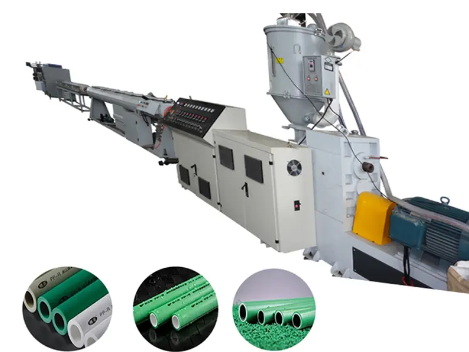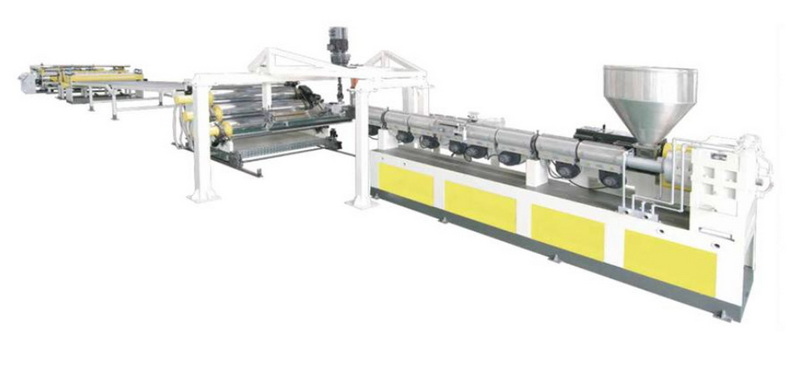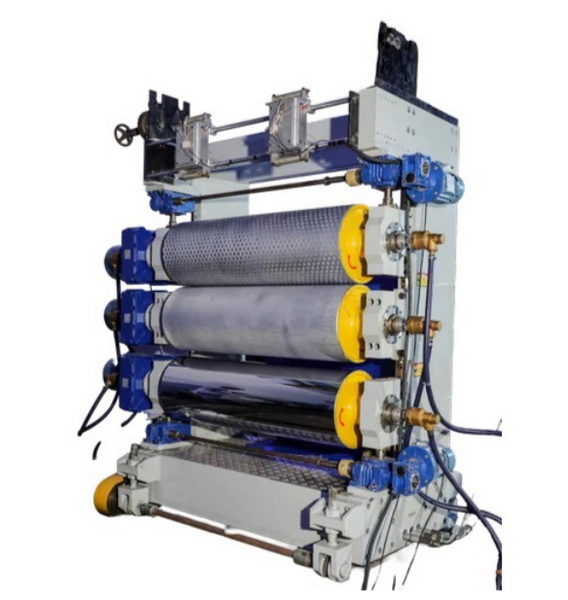Content Menu
● Introduction to Cold Extrusion
>> Mechanics of Cold Extrusion
>>> Cold Extrusion Process Diagram
● Applications in the Pet Food Industry
>> Nutrient Preservation and Flavor Retention
>> Improved Texture and Moisture Retention
>> Environmental Impact and Energy Efficiency
● Applications in Metal Manufacturing
>> Automotive Industry
>> Aerospace Industry
● Challenges and Considerations
>> Material Limitations
>> Tool Design
● Advanced Technologies in Cold Extrusion
>> Customization and Flexibility
>> High Meat Content Treats
● Economic Benefits of Cold Extrusion
>> Cost Savings
>> Material Efficiency
● Industry-Specific Applications
>> Automotive Industry Applications
>> Aerospace Industry Applications
>> Food Manufacturing Applications
● Future Developments in Cold Extrusion
>> Integration with Emerging Technologies
>> Sustainability Initiatives
>> Global Market Trends
>> Technological Innovations
● Case Studies: Successful Implementations
>> Pet Food Industry Case Study
>> Automotive Industry Case Study
● Educational and Training Programs
>> Operator Training
>> Maintenance and Repair
● Conclusion
● FAQ
>> 1. What are the primary benefits of using cold extrusion PET machinery in pet food production?
>> 2. How does cold extrusion enhance material properties in metal manufacturing?
>> 3. What are some common applications of cold extrusion in the automotive industry?
>> 4. How does cold extrusion contribute to environmental sustainability?
>> 5. What are the key challenges faced in implementing cold extrusion technology?
Cold extrusion technology has revolutionized various industries by offering a cost-effective, energy-efficient, and versatile manufacturing process. This article will delve into the benefits and applications of cold extrusion PET machinery across different sectors, highlighting its potential to enhance production quality and efficiency.

Introduction to Cold Extrusion
Cold extrusion is a process that involves shaping materials, such as metals or pet treat dough, at room temperature without the application of heat. This method is particularly beneficial for preserving the integrity of sensitive ingredients and reducing energy consumption.
Mechanics of Cold Extrusion
The process involves placing a material into a mold and applying high pressure to push it through a die, creating the desired shape. This technique is widely used in metalworking for producing parts like gears and connectors, but it also has significant applications in the pet food industry.
Cold Extrusion Process Diagram
A[Material Preparation] --> B[Material Loading]
B --> C[Extrusion Process]
C --> D[Shaping]
D --> E[Final Product]
Applications in the Pet Food Industry
Cold extrusion PET machinery is particularly beneficial for producing pet treats. It helps preserve nutrients, improve texture, and reduce energy costs compared to traditional hot extrusion methods.
Nutrient Preservation and Flavor Retention
Cold extrusion avoids high temperatures, which can degrade vitamins and amino acids. This method ensures that pet treats retain their nutritional value and flavor, making them healthier and more appealing to pets.
Improved Texture and Moisture Retention
Cold-extruded treats are softer and easier to chew, making them more comfortable for pets. The process also retains moisture, reducing the need for preservatives and ensuring longer freshness.
Environmental Impact and Energy Efficiency
By operating at room temperature, cold extrusion significantly reduces energy consumption, making it a more sustainable option for manufacturers.
| Process | Temperature | Energy Usage |
| Hot Extrusion | High | High |
| Cold Extrusion | Low | Low |
Applications in Metal Manufacturing
Cold extrusion is widely used in the metal industry for producing complex parts without heating the material. This process enhances material strength through work hardening and reduces waste.
Automotive Industry
Cold extrusion is used to manufacture lightweight yet durable components such as gear blanks and drive shafts, improving vehicle performance.
Aerospace Industry
High-strength parts created through cold extrusion are crucial for ensuring safety and reliability in extreme conditions.
Video: Aerospace Applications of Cold Extrusion
Cold extrusion plays a vital role in aerospace by producing parts that withstand extreme stress and temperature variations.
Challenges and Considerations
Despite its benefits, cold extrusion presents challenges such as material limitations and precise tool design requirements.
Material Limitations
Not all metals are suitable for cold extrusion, and the choice of material is critical for successful production.
Tool Design
The design of the die and punch must be precise to minimize wear and tear, ensuring efficient production.
Advanced Technologies in Cold Extrusion
Recent advancements in cold extrusion technology have further enhanced its efficiency and versatility. For instance, the integration of advanced machinery like the DR-126 cold pet treat extrusion machine allows for the production of a variety of pet treats with different shapes and sizes, including lecithin treats and jerky treats.
Customization and Flexibility
Cold extrusion machines can be customized to meet specific production needs. For example, the DR-126 machine features a patented design that allows for easy mold changes, enabling the production of treats in various shapes such as hearts, cylinders, and strips.
High Meat Content Treats
Cold extrusion is particularly beneficial for producing high meat content treats. It helps retain the nutritional value of the ingredients and maintains the texture of the final product, making it ideal for pet owners seeking healthier options for their pets.

Economic Benefits of Cold Extrusion
Cold extrusion offers significant economic advantages over traditional manufacturing methods. By eliminating the heating phase, it reduces energy consumption and operational costs. Additionally, the process minimizes material waste, making it economically viable for high-volume production.
Cost Savings
The elimination of heat in the cold extrusion process not only saves energy but also reduces the need for post-processing treatments such as machining or grinding. This results in lower overall production costs and increased profitability for manufacturers.
Material Efficiency
Cold extrusion is highly efficient in terms of material usage. It can produce more parts from the same amount of material compared to other processes, reducing waste and conserving resources.
Industry-Specific Applications
Cold extrusion is versatile and can be applied across various industries, including automotive, aerospace, and food manufacturing.
Automotive Industry Applications
In the automotive sector, cold extrusion is used to produce lightweight yet strong components such as gear blanks and drive shafts. These parts are crucial for improving vehicle performance and efficiency.
Aerospace Industry Applications
The aerospace industry benefits from cold extrusion by producing high-strength parts that can withstand extreme conditions, ensuring safety and reliability.
Food Manufacturing Applications
In food manufacturing, cold extrusion is used to create nutrient-rich pet treats with appealing textures and shapes, enhancing consumer satisfaction.
Future Developments in Cold Extrusion
As technology continues to evolve, cold extrusion is expected to become even more efficient and versatile. Advances in machinery design and material science will likely expand its applications across industries.
Integration with Emerging Technologies
The integration of cold extrusion with emerging technologies such as 3D printing or advanced robotics could further enhance its precision and efficiency. This could lead to new applications in fields like medical device manufacturing or aerospace engineering.
Sustainability Initiatives
Cold extrusion's energy efficiency and material conservation make it an attractive option for companies focusing on sustainability. Future developments may include more eco-friendly materials and processes that align with global environmental goals.
Global Market Trends
The global market for cold extrusion machinery is expected to grow as more industries recognize its benefits. This growth will be driven by increasing demand for sustainable manufacturing processes and high-quality products.
Technological Innovations
Innovations in cold extrusion technology are expected to improve production speed and product quality. For example, advanced sensors and automation systems can optimize the extrusion process, reducing errors and improving consistency.
Case Studies: Successful Implementations
Several companies have successfully implemented cold extrusion technology to enhance their production processes. For instance, a leading pet food manufacturer increased its production efficiency by 30% after switching to cold extrusion for pet treats.
Pet Food Industry Case Study
A pet food company in Europe adopted cold extrusion to produce high-quality pet treats. The company reported a significant reduction in energy costs and an increase in customer satisfaction due to the improved texture and nutritional content of the treats.
Automotive Industry Case Study
An automotive parts manufacturer in the U.S. used cold extrusion to produce lightweight components. This resulted in improved vehicle performance and reduced material waste, contributing to the company's sustainability goals.
Educational and Training Programs
To ensure the effective use of cold extrusion technology, manufacturers often invest in educational and training programs for their staff. These programs cover topics such as machinery operation, tool design, and quality control.
Operator Training
Operators are trained to optimize the extrusion process, ensuring that the machinery is used efficiently and safely. This includes understanding how to adjust parameters like pressure and speed to achieve desired product qualities.
Maintenance and Repair
Training also focuses on maintenance and repair techniques to minimize downtime and extend the lifespan of the machinery. Regular maintenance is crucial for maintaining production efficiency and product quality.
Conclusion
Cold extrusion PET machinery offers numerous advantages across various industries, from pet food to metal manufacturing. Its ability to preserve nutrients, enhance material properties, and reduce energy consumption makes it an attractive option for manufacturers seeking to improve product quality and efficiency.

FAQ
1. What are the primary benefits of using cold extrusion PET machinery in pet food production?
Cold extrusion helps preserve nutrients, improves texture, and reduces energy costs. It allows for the production of healthier and more appealing pet treats by avoiding high temperatures that can degrade sensitive ingredients.
2. How does cold extrusion enhance material properties in metal manufacturing?
Cold extrusion increases material strength through work hardening, making it ideal for high-stress applications. This process also reduces waste and improves surface quality, resulting in stronger and more durable parts.
3. What are some common applications of cold extrusion in the automotive industry?
Cold extrusion is used to produce lightweight yet durable components such as gear blanks and drive shafts. These parts are crucial for improving vehicle performance and efficiency.
4. How does cold extrusion contribute to environmental sustainability?
By operating at room temperature, cold extrusion significantly reduces energy consumption compared to hot extrusion methods. This makes it a more environmentally friendly option for manufacturers.
5. What are the key challenges faced in implementing cold extrusion technology?
Key challenges include material limitations, as not all materials are suitable for cold extrusion, and the need for precise tool design to prevent excessive wear and tear.













